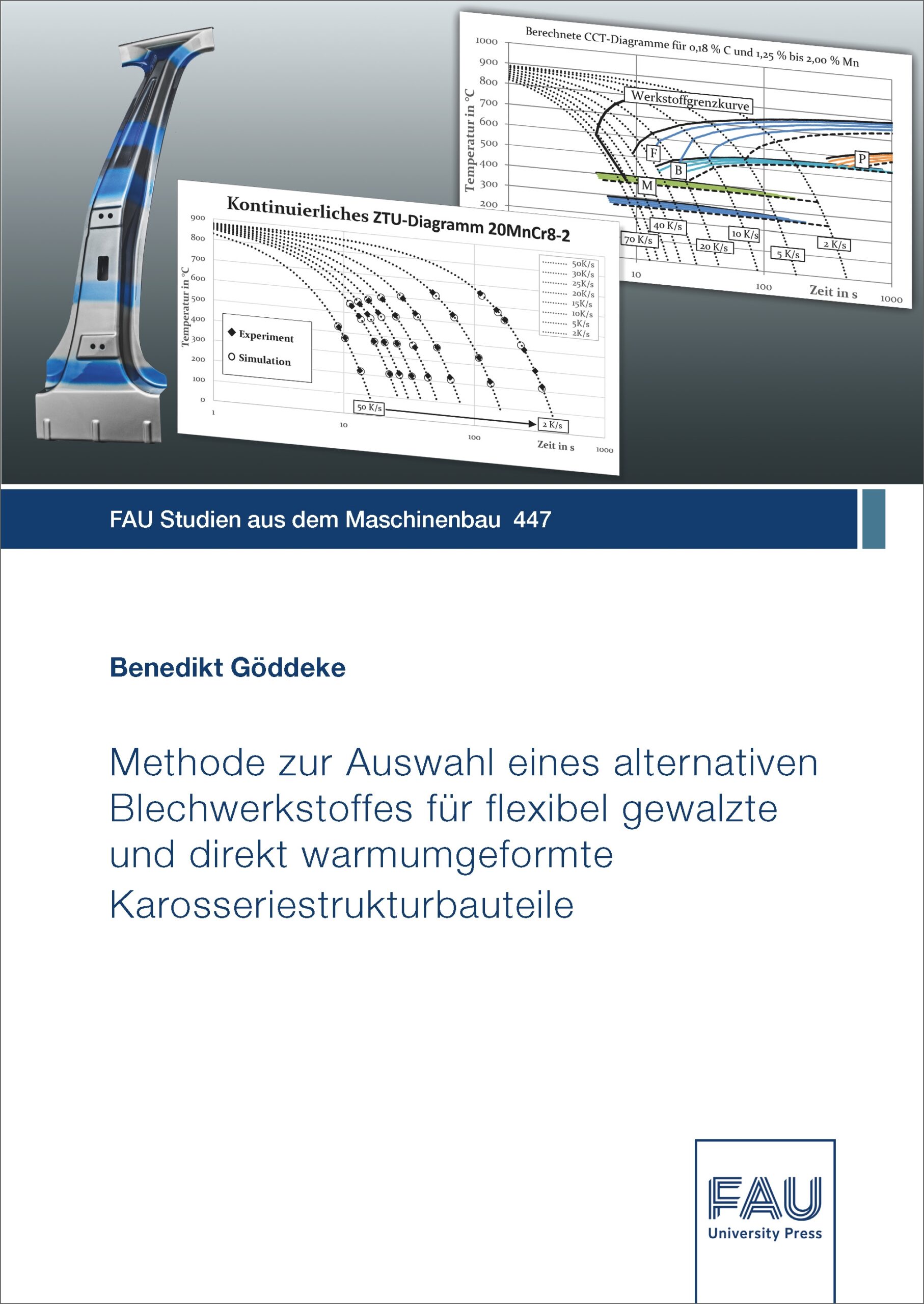Description
The continuously progressing climate change led to an increased focus on sustainable climate politics and associated legislation over the past two decades. Hot forming of steel blanks is a globally established technology to achieve lightweight designs in body in white as it allows the manufacturing of thin gauge ultra-high strength structural components. Further weight reductions can be achieved by using Tailor Rolled Blanks TRB® or Tailored Properties or a combination of both. Within the field of hot forming, recent R&D activities aimed often at either an improvement of part properties or at an improvement of the commercial efficiency of the hot stamping process by application of alternative material grades beyond the well-established 22MnB5 grade. However, a structured approach to define the right alternative grade for a given hot forming process is yet missing. This thesis establishes a methodology to define and characterize an alternative material grade for a given hot stamped structural component to be produced considering the requirements of the part itself as well as the requirements for a commercially efficient hot stamping process. Therefore, a limit line is being introduced and it is being calculated for continuous cooling rates as it allows to compare the material’s requirements with existing time temperature charts.


Reviews
There are no reviews yet.